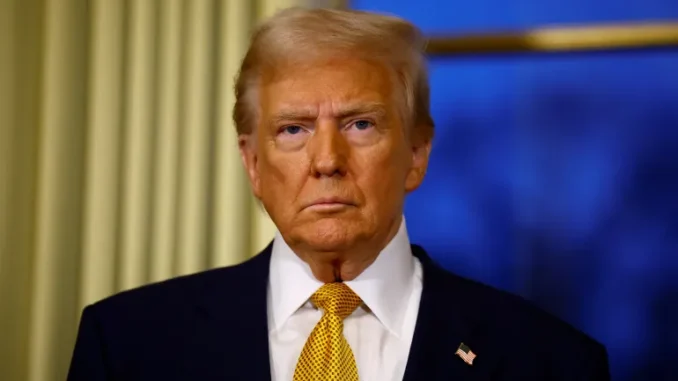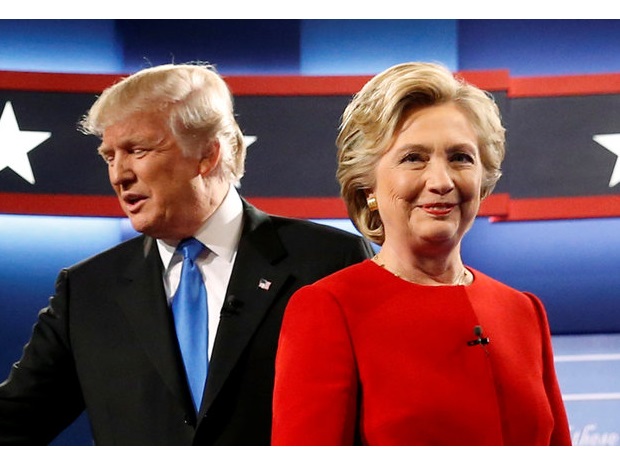
- US President-elect’s stand on tariffs has caused consternation among friends and foes
“The assumption that the Trump administration will not be a problem for India needs to be taken with a pinch of salt, especially when it comes to trade, tariffs and immigration. During Trump’s first term, tough immigration policies affected Indian tech professionals adversely and India lost its GSP status. Having some of the highest tariffs in the world and a trade surplus with the US, India could be a target for US action. Differences over Iran and Russia could still cloud the India-US picture.”

The year 2025 is going to be eventful. On January 20, Donald Trump will be sworn in as the President of the richest and militarily most powerful country in the world. In itself, it would not mean much; after all, more than a dozen men have held that office since the US achieved premier status in the wake of World War II. But Trump’s policies aim to end the liberal international order that the US established, based on the solidarity of democracies, a US-led global military alliance system, concern for human rights, free trade and the setting up of the UN system.
Taken together with separate but parallel revisionist efforts by Russia and China, the world could witness a wild rollercoaster ride in the coming year. As it is, with US backing, Israel has made a huge hole in the rules-based international order by its use of massive and disproportionate military force in Gaza.
Till now, Russia and China were countries that the US defined as revisionists, wanting radical changes in the global order. These countries have seen the liberal international order with its solidarity of democratic states as a major threat and have had no hesitation in challenging its fundamental tenet – territorial sovereignty – in Ukraine, Taiwan, India and the South China Sea.
Now, Trump is also keen on territorial revision and wants the Panama Canal back. He also wants to buy Greenland and pull the US out of the World Health Organisation and several other UN organizations and blow up the global trading system and climate change agreements.
Trump’s threats on tariffs have caused consternation among friends and foes. America’s neighbors like Mexico and Canada are reeling from the prospect of facing 25 per cent tariffs. Others are bracing for a tariff war. Trump wants to withdraw the US from its NATO commitments if the allies do not “pay their bills”, but this time he seems fine with regard to South Korea and Japan, no doubt because of Russia, North Korea and China.
A world where three of its principal powers are revisionist is bound to be a turbulent one because there is nothing common in the issues on which they want a change. Russia, much reduced as a military and economic power, is really in a defensive mode. But as the case of Ukraine shows, it is willing to inflict great damage and destruction in an effort to recreate its erstwhile dominance of eastern Europe till the 1990s. The Europeans understand this and are rightly apprehensive. It was not for nothing that long-standing neutrals like Sweden and Finland hastily joined NATO in the wake of Russia’s invasion of Ukraine.
As for China, after its ‘Century of Humiliation’, it sees itself as a global power again and wants the world to acknowledge it. So, it wants to revise the law of the sea as per its needs, demands an international system that is not based on ideology (i.e. democracy), sees economic development as more important than political freedom and wants changes in the governance structures of international bodies such as the International Monetary Fund and the World Bank.
The Chinese military posture, too, is defensive in relation to the US. But in the process of countering America, China has built a formidable military machine. The recent displays of two advanced fighters and the launch of what is the world’s largest and most modern amphibious assault ships are manifestations of this approach.
China may be undergoing a serious economic slowdown, but that is unlikely to affect its military buildup that involves significant investments in boosting technological self-sufficiency and advanced manufacturing. Alarmingly, the Chinese People’s Liberation Army has continued with its rapid nuclear buildup. The US estimates that China now has more than 600 operational warheads and is heading for a total of 1,000 by 2030.
For India, this situation offers both an opportunity and a threat. The broad contours of the Indian response to Russia and China have been visible for a while. India continues to deal with Russia and seek opportunities, whether in buying oil at a discount or promoting trade that the Russians are trying to shift in a southerly direction through economic realignment and infrastructure development.
As for China, India is seeking a mini-détente based on resolving border tensions that arose in 2020 and restoring normal trade and investment links.
The assumption that the Trump administration will not be a problem for India needs to be taken with a pinch of salt, especially when it comes to trade, tariffs and immigration. During Trump’s first term, tough immigration policies affected Indian tech professionals adversely and India lost its GSP status. Having some of the highest tariffs in the world and a trade surplus with the US, India could be a target for US action. Differences over Iran and Russia could still cloud the India-US picture.
Even so, there can be gains from a potential easing of tensions between Russia and the US. Aggressive US policies against China could accelerate the China+1 strategy of Western companies and lead to increased FDI in India, assuming Delhi makes itself more attractive to foreign investment.
But when it comes to Trump, nothing is simple. The assumption that the US would look favorably towards India on account of China could be undermined by Trump’s instinct to avoid external conflict. Further, his advisers such as Musk are keen for even ties with China because of business reasons. Don’t forget that in January 2020, Trump signed a major trade deal with China. Never mind that it didn’t work then, but it could be the template for a new arrangement that might undermine the rationale of the India-US connection.
(Manoj Joshi is Senior Journalist & Distinguished Fellow, Observer Research Foundation)





Be the first to comment